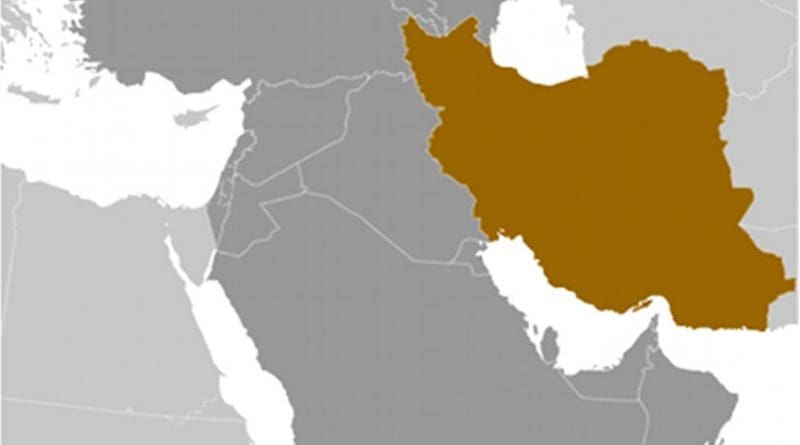Iranian Threat: It’s Not Nuclear Program, But The IRGC – Analysis
By INEGMA
By Riad Kahwaji*
Iranian President Hassan Rouhani has successfully worked up his charm in the West. In just couple of years since taking office he has managed to build an image as a moderate leader that is capable of gaining the support of the Supreme Leader Ayatullah Khamenei for his efforts in reaching a deal with the P5+1 on Tehran’s controversial nuclear program.
However, Rouhani has foes in Tehran which the West refers to as the hardliners, and they comprise the Iranian Revolutionary Guards (IRGC) and a number of extremist Mullahs. So far the hardliner camp has played game and cautiously supported the nuclear talks in the hopes of having sanctions lifted to allow the release of billions of dollars to the country, most of which would eventually end up in ministries and accounts controlled by the IRGC.
Although many of the U.S. Administration members and the parties advocating a nuclear deal with Iran have convinced themselves and still trying to convince others that most of the money going to Iran from easing sanctions would be used to shore up the devastated Iranian economy, they are not yet able to answer a vital question: What about the IRGC?
Tehran today feels powerful and confident because of aggressive foreign policies in which the IRGC played a leading role. The IRGC training and arming of Shiite militias in Iraq was one of the main factors that led to a bloody insurgency against U.S. troops there that brought about their withdrawal in 2009.
The IRGC’s training and arming of Palestinian militias contributed to the collapse of the peace talks and the eventual emergence of Islamic factions ruling the Gaza Strip and subjecting Israel to a war of attrition.
The IRGC was also behind the birth of Hizbullah in Lebanon, which led a long war on Israel to drive it out of the country and recently became a major player on the Syrian war arena helping the regime’s forces there. The IRGC is now raising an army of Shi’ite militias from Iraq, Asian countries and Yemen to use in spreading Tehran’s influence in the Middle East.
The IRGC is the main force protecting the Iranian regime internally and preventing any forms of democracy, freedoms, and liberal practices in the country. There is a wide sense amongst many of the Iranian officials that IRGC actions were what really forced Washington and other world powers to yield and agree to negotiate and make concessions, allowing Iran to keep a good part of its nuclear program and having sanctions lifted.
As such, the logical conclusion is that the IRGC will remain untouchable and will continue operating without any change in its behavior in any permanent or meaningful manner. The current White House Administration of President Obama seems to believe that normalizing relations with Iran will empower the moderates and weaken the extremists. This may have held true in a country that does not have expansionist ambitions, and does not perceive itself as an empire and is using the export of the Islamic Revolution as a means to empower Shi’ite groups worldwide and bring them under the control of the Supreme Leader.
Iran is not an ordinary state with one army and one government. It is a system where the IRGC acts as a state within a state. The IRGC is much better equipped and armed than the Iranian regular armed forces, and has its own intelligence arm and internal security forces that outnumber and outmatch the regular police. So when the United States and the other countries of the G5+1 sign a nuclear deal with Iran soon, would they be signing it with the IRGC state as well?
Hassan Rouhani might be the president, but he has no power over the IRGC. Only the Supreme Leader has this power and his ailing health brings about the possibility of having to deal with a new Supreme Leader soon, and it could be one of the extremist Mullahs. The IRGC fully controls the country’s nuclear program as well as the ballistic missiles program. In other words, they control all the strategic military assets of the country. So what is the IRGC view of the nuclear deal with the G5+1 and the possible normalization of relations with the West? Nobody really knows. We only hear contradictory views from various commanders of the group.
However, based on IRGC history and the recent actions it is reasonable to conclude that they want more power, greater regional influence, more money and resources, and remain unwilling to share or surrender what they gain.
If Iran wants to be a regional power that commands the respect and cooperation of its neighbors and the international community, it will have to end its policy of exporting its revolution. In other words, it has to disband the IRGC and transfer all the assets and powers to its regular professional Armed Forces and other relevant government institutions.
For the international community, in general, and Middle East countries, in particular, the future will prove the peaceful coexistence with the Iranian regime will not be possible. The IRGC will most likely disappoint those who believe Iran with more economic resources and good ties with the West can be tamed and restrained.
Lifting sanctions against Iran ought to be gradual and tied to Iran halting its policy of exporting the revolution, and subsequent disbanding of the IRGC. Otherwise, the Iranian regime will continue to become a more serious threat to the international community even without nuclear weapons.
*Riad Kahwaji, CEO, INEGMA

